Kitora:
Gorgeous murals grace the tomb's interior. Investigation proceeds in tandem with preservation and restoration. An image emerges of the tomb's occupant.
Items recovered from the stone chamber's floor

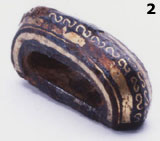
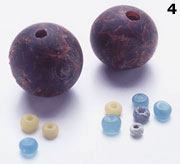
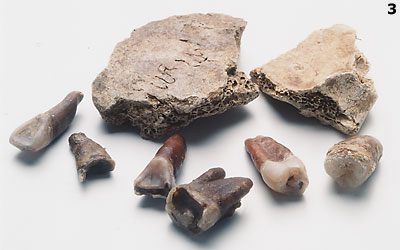
1. Metal fitting of gilded bronze. Diameter 7.5 cm.
2. Sword decoration (loop for attaching the sashō) with gold inlay. Length 3.9 cm.
3. Human bone (cranial parts) and teeth.
4. Amber (diameter 1.6 cm) and small glass beads.
 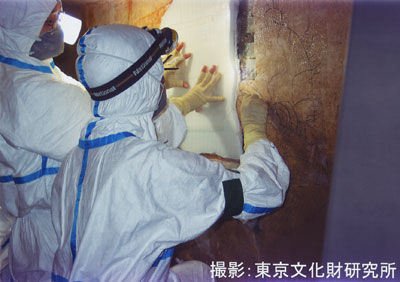
Protecting the murals prior to removal (east wall)
|
 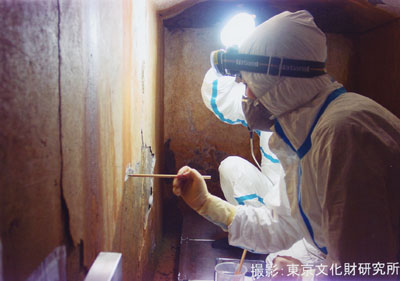
Removal and conservation of the western wall's "dog image"
|
 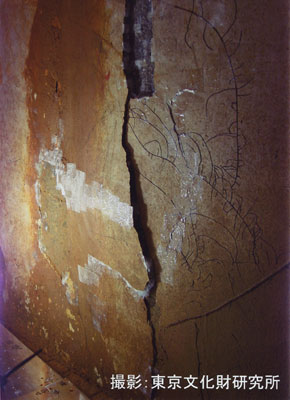
Protecting the "blue dragon" (Seiryū)
|
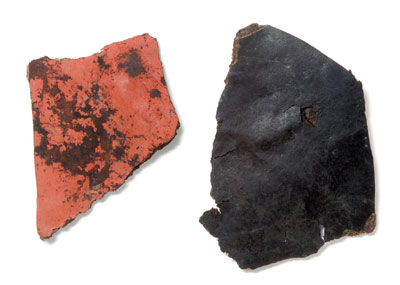 Stripped lacquer films from the coffin 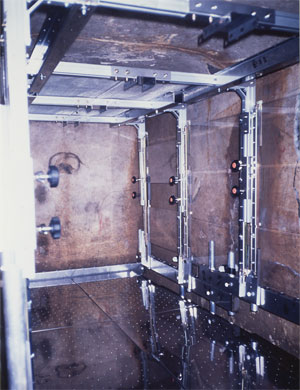
A "bird cage" protecting the murals
|
Kitora Tomb, Asuka Village, Nara Prefecture
A small stone chamber 1 m plus in height and width, 2.4 m long, just large enough to bury a single person. But the interior was decorated with gorgeous paintings of the four directional deities, the animals of the Chinese zodiac, the heavenly stars and the sun and the moon. This is Kitora kofun (ancient tomb), discovered after Takamatsuzuka as the second tomb with murals. Who was buried in this small mound, less than 14 m across, at Abeyama in Asuka Village, in a corner of the southwestern portion of the Asuka region? Challenging that puzzle, the 2004 excavation proceeded to an examination of the stone chamber.
Murals on the verge of collapse
The first astonishing discovery inside the stone chamber was that the murals were already peeling off. The stucco on which Seiryū (a blue dragon, guardian of the east) was drawn had lifted 3 cm from the eastern wall, as if completely flying through the air. Although investigators had accessed the chamber, they could hardly excavate with peace of mind. Accordingly rayon paper was pasted to secure those portions in jeopardy, and a stainless steel cage erected within the chamber to protect the walls further, so that excavation of the floor could proceed. The excavators literally became caged birds.
Discoveries from the chamber floor shed light on its occupant
Fragments of a lacquered wooden coffin, torn apart when the tomb was robbed, lay 5 cm thick on the chamber floor, mixed with grave goods and human bone. Thanks to the painstaking measure of carrying each layer of deposit outside the chamber, and looking through it for remains after taking X-rays, minute artifacts have been found.
A gilded bronze metal fitting for the coffin still shines brilliantly; sword decorations were executed with superbly inlaid patterns. Based on an appraisal of bone and tooth remains, the interred was identified as male, middle-aged or older. An aristocrat's image has come hazily into view.
The course of future investigations
After excavation and photographing had finished, the removal of endangered portions of the murals began. At present, Seiryū and Byakko (a white tiger, guardian of the west), and the image of the zodiac dog have been taken out of the chamber. But the real work of removal, fraught with trouble, still lies ahead. (Hanatani Hiroshi)
